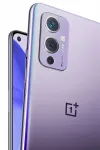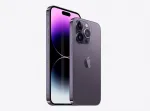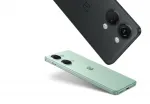The Nokia 105, also known as the Nokia model_name, is a basic mobile device that offers essential communication features at an affordable price. Released in 2013, the Nokia 105 has since been discontinued, making it a sought after device for those who value simplicity and durability. It is an ideal device for users who prefer a basic phone, without the complicated features of a smartphone.
Weighing just 70 grams (2.47 oz), the Nokia 105 is a lightweight and compact device that is easy to carry around. It measures 107 x 44.8 x 14.3 mm, with a phone dimension of 64 cc (4.21 x 1.76 x 0.56 in). Despite its small size, the Nokia 105 does not compromise on durability and is designed to withstand everyday wear and tear. It also features a flashlight, providing a convenient source of light when needed.
The Nokia 105 supports a Mini-SIM card, which is a standard SIM card size used in most mobile devices. This allows users to easily switch between devices without the hassle of changing SIM cards. In terms of connectivity, the Nokia 105 does not offer advanced options such as NFC, WLAN, or Bluetooth. However, it does have a FM radio, making it a good choice for those who enjoy listening to the radio.
When it comes to storage, the Nokia 105 has an internal memory of 8MB and 384 kB. While this may seem small compared to smartphones, it is more than sufficient for storing contacts and basic information. The phonebook can hold up to 500 contacts, and the call records feature allows users to track their call history. The Nokia 105 also does not have a memory card slot, so users cannot expand the storage capacity.
The Nokia 105 is powered by a Li-Ion 800 mAh battery, which is removable. This allows users to carry a spare battery for longer usage. The battery can last up to 840 hours on standby mode and up to 12 hours and 30 minutes of talk time, making it a reliable device for everyday use. The phone also comes with a proprietary charging port, which only supports charging.
Featuring a 1.45-inch TFT display, the Nokia 105 has a screen resolution of 128 x 128 pixels, with a pixel density of approximately 125 ppi. While the display may not be as vibrant as modern smartphones, it is clear and easy to read, making it suitable for basic tasks such as texting and making calls. The phone also has a 3.5mm headphone jack and a loudspeaker, making it convenient for users to listen to music and make hands-free calls.
The Nokia 105 runs on a GSM network, with support for 2G bands GSM 900 and 1800. This makes it a suitable device for users in areas with limited network coverage. It does not have EDGE or GPRS capabilities, which are used for data transfer, so users will not be able to access the internet on this device.
In terms of features, the Nokia 105 has a few basic functionalities such as a digital clock, Java support, and built-in games. However, it does not have a camera, making it unsuitable for users who enjoy taking photos and videos on their devices. It also does not have any sensors or a messaging feature, other than SMS.
In conclusion, the Nokia 105, or the Nokia model_name, is a simple and durable device that offers essential communication features. While it may lack advanced functionalities, it is a reliable device for everyday use and is well-suited for those who prefer a basic phone. Its compact size and affordable price make it an attractive option for users looking for a no-frills mobile device.









